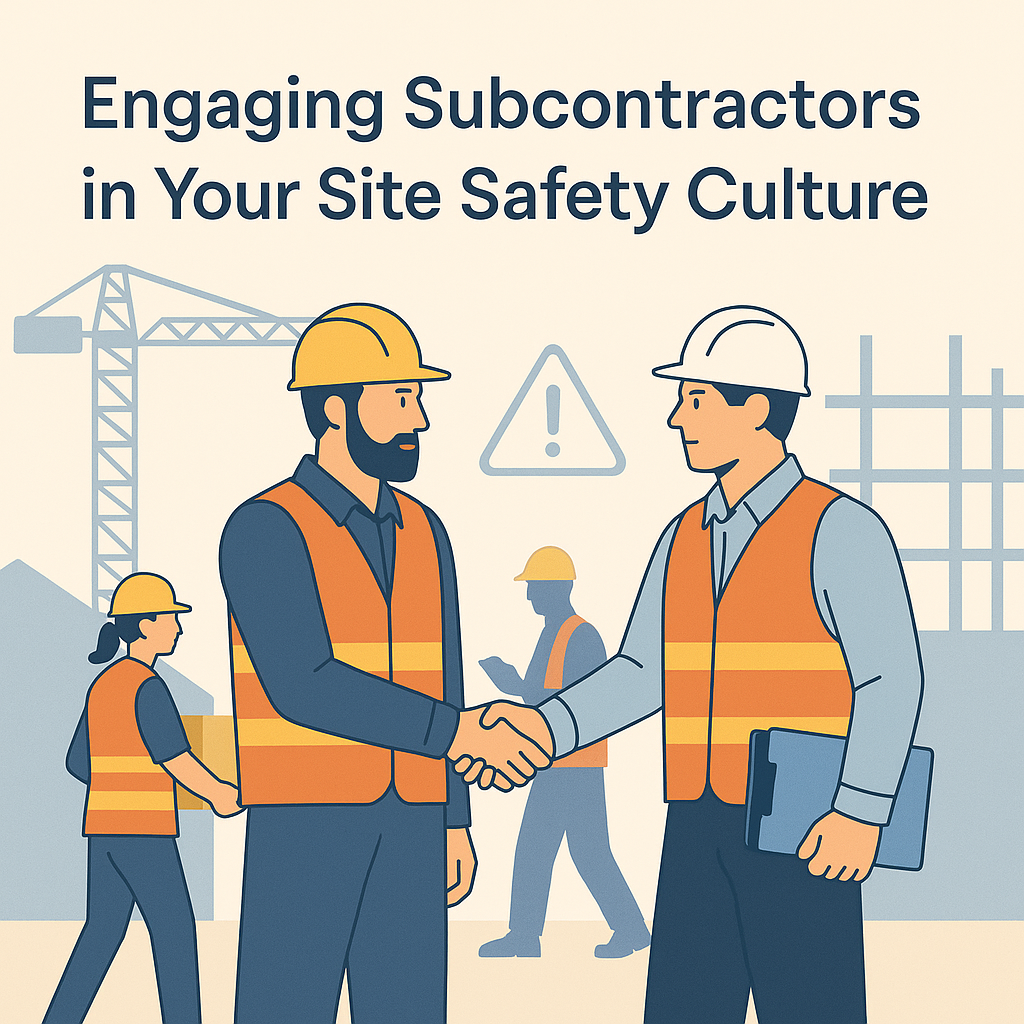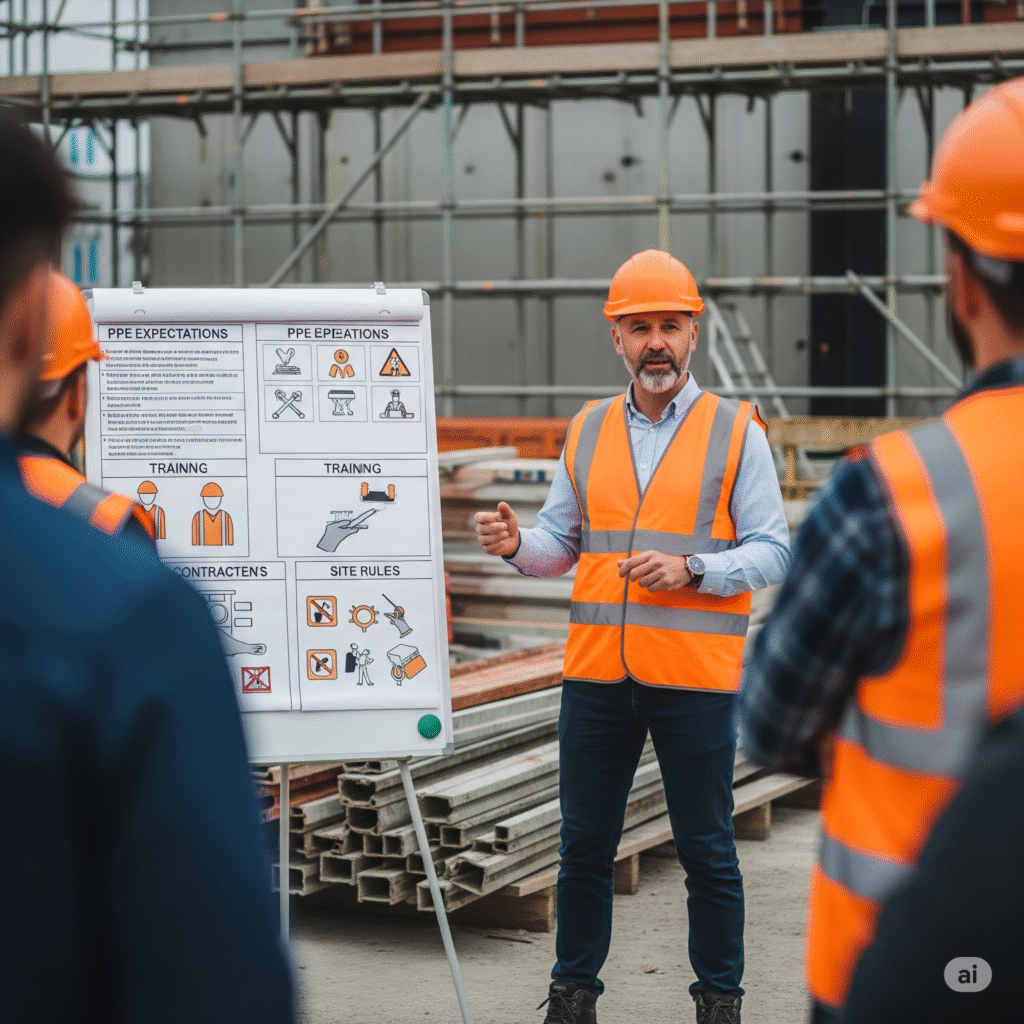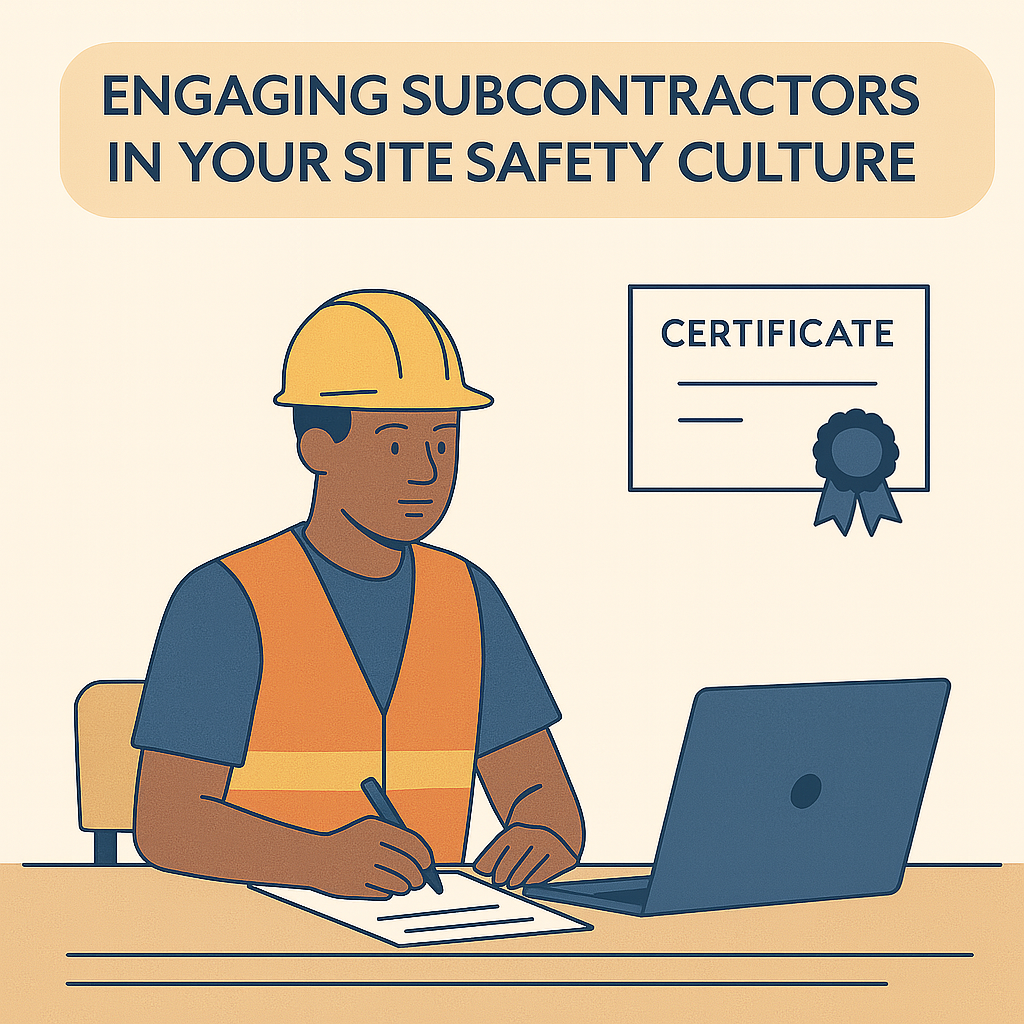Engaging subcontractors in your site safety culture isn’t optional—it’s critical. Subcontractors are a core part of residential construction projects, bringing specialized skills and experience.
But they also introduce unique safety challenges: different work styles, varying training levels, and, sometimes, competing priorities.

According to the Occupational Safety and Health Administration (OSHA) (dofollow), controlling contractor and subcontractor safety is a shared responsibility. Failure to integrate subcontractors into your safety culture can lead to serious accidents, costly claims, and regulatory penalties.
Engaging subcontractors in your site safety culture helps ensure everyone works to the same safety standard, protecting all workers and boosting your business’s reputation.
Understanding the Challenge with Subcontractors
Before discussing strategies for engaging subcontractors in your site safety culture, it’s important to understand why it’s challenging.
Common barriers include:
- Different safety expectations among trades.
- Subcontractors assuming they’re responsible only for their own crew.
- Language or communication gaps on diverse sites.
- Pressure to meet tight schedules leading to shortcuts.
- Smaller subcontractors lacking formal safety programs.
Recognizing these challenges is the first step toward overcoming them.
Key Strategies for Engaging Subcontractors in Your Site Safety Culture
Here’s how you can build genuine buy-in and alignment with subcontractors on safety.
1. Set Expectations Early and Clearly
Engaging subcontractors in your site safety culture starts before they arrive on site.
- Include safety requirements in contracts and bid packages.
- Clearly state PPE expectations, training requirements, and site rules.
- Review safety obligations in pre-job meetings.
- Provide written safety policies in advance.

When subcontractors know what’s expected, they can plan and budget for compliance.
2. Conduct Thorough Site Orientations
Don’t assume subcontractors know your site’s specific hazards and procedures.
- Provide mandatory site orientations for all workers.
- Cover emergency procedures, reporting protocols, and hazard areas.
- Use clear, easy-to-understand language—consider translations if needed.
- Document attendance to show compliance.
This step ensures everyone on site starts with the same safety foundation.
3. Foster Open Communication
Engaging subcontractors in your site safety culture relies on two-way communication.
- Hold regular toolbox talks and include all subcontractors.
- Encourage workers to raise concerns without fear of retaliation.
- Use daily huddles to review changing site conditions.
- Share updates in multiple formats: in-person, text alerts, posted bulletins.

Strong communication breaks down barriers and keeps safety top of mind.
4. Include Subcontractors in Planning and Risk Assessments
Effective risk management requires input from everyone on site.
- Invite subcontractor supervisors to pre-task planning meetings.
- Conduct joint hazard assessments.
- Review Job Safety Analyses (JSAs) together.
- Collaborate on control measures to ensure buy-in.
Involving subcontractors in planning shows respect and ensures realistic, practical controls are put in place.
For templates and guidance, see the Canadian Centre for Occupational Health and Safety (CCOHS) (dofollow).
5. Provide Training and Resources
Not all subcontractors have access to formal safety training. Support them by:
- Offering free or low-cost training sessions.
- Sharing your own company’s safety resources.
- Demonstrating safe work practices on site.
- Providing translated materials if needed.

Safety is a shared responsibility—helping subcontractors succeed benefits the entire project.
6. Enforce Consistently and Fairly
Policies are meaningless without consistent enforcement.
- Conduct regular site inspections that include subcontractor work areas.
- Address violations promptly and fairly.
- Apply the same standards to your own crews and subcontractors alike.
- Offer coaching and support before jumping to punitive measures.
When enforcement is fair and predictable, subcontractors see that safety isn’t negotiable.
7. Recognize and Reward Safe Behaviors
Positive reinforcement can help change attitudes toward safety.
- Acknowledge subcontractors who demonstrate excellent safety practices.
- Celebrate milestones like injury-free days.
- Offer small incentives for reporting hazards or suggesting improvements.
- Publicly thank subcontractors for their safety leadership.
Recognition builds trust and pride in maintaining high standards.
8. Lead by Example
Ultimately, your site’s culture is shaped by what leadership does, not just what it says.
- Supervisors and company owners must model safe behaviors at all times.
- Avoid sending mixed messages about “production over safety.”
- Invest in PPE, tools, and training that support safe work.
- Demonstrate that safety is a core value, not a box to check.
Your subcontractors will mirror what they see from you.
Benefits of Engaging Subcontractors in Your Site Safety Culture
The effort you put into engaging subcontractors in your site safety culture pays off in significant ways:
- Fewer injuries and fatalities on site.
- Improved regulatory compliance.
- Lower insurance costs and claims.
- Better productivity—fewer disruptions from accidents or inspections.
- Stronger reputation with clients and the community.
- Improved relationships with subcontractors, leading to better collaboration.
Safety is not just good ethics—it’s good business.
Final Thoughts on Engaging Subcontractors in Your Site Safety Culture
Engaging subcontractors in your site safety culture isn’t always easy, but it’s essential.
By setting clear expectations, providing training and resources, fostering open communication, and enforcing consistently, you can ensure everyone on site works to the same high safety standard.
Your commitment to subcontractor safety demonstrates true leadership and builds a stronger, more professional construction industry.
For more actionable strategies, check out our related article on Building a Safety-First Culture on Residential Construction Sites .

No comments yet